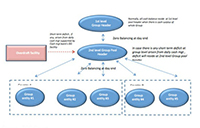Getting capital to work: Part 1

Market developments in Asia
A number of developments have affected Asia significantly. Intra-Asian trade is growing rapidly, having more than tripled over the past decade. It is expected that 60% of global trade will be linked to Asia by 2020, either via imports or exports. Increasingly, the second-tier cities in Asia are playing a larger role in this pan-regional trade as supply chains and distribution networks expand. The integration across markets is also balancing wages in the region, which means many corporates are turning to their operations to save cost.
Corporates are reacting to these changes in various ways. With demand for goods and services spiking, working capital funding needs to be optimized to facilitate rapidly growing operations. Logistics networks and distribution relationships are reviewed on a continued basis to deal with the complexities that transportation of goods to inaccessible places entail. “In our interaction with our clients we witness frequent renegotiations of terms with suppliers and buyers. More than ever, partnerships with banks are now used to devise innovative financing solutions,” says Vivek Batra, global head of sales, DBS Global Transaction Services.
Meanwhile, Asia’s booming e-commerce industry promises to revolutionize every layer of the supply chain. In the consumer sector for instance, delivery channels are subject to rapid change, driving corporates to review access to markets, buyers and suppliers.
Techniques to unlock trapped cash in Asia
Asian treasurers are considering their supply chain more holistically to identify opportunity gaps. “An end-to-end understanding of their production and logistics network begins with a closer look at the trade cycle, that is, seeing whether the opportunity lies internally with collections or with the company’s suppliers. Corporates can then act upon this information to improve their cash conversion cycle,” adds Batra.
Specifically, companies are undertaking differentiated negotiation strategies for each of their supplier segments based on the strategic value of each supplier. A better understanding in this regard can help to increase days payables outstanding (DPOs) with some of the suppliers. On the flipside, days sales outstanding (DSOs) can be decreased by imposing penalties on defaulters or giving the sales team appropriate incentives linked to improved payment conditions.
“We advise our clients to conduct an inventory-to-revenue analysis to optimize stocks on hand in a bid to decrease days inventory outstanding (DIOs). Combined, an improvement in these metrics yield significant savings that can be used to reinvest and build the business.”
Subscribe to DBS BusinessClass
Stay updated with the latest market trends and industry insights, connect with a network of entrepreneurs, and gain access to exclusive event invitations. Join Asia's fastest growing business community – get your complimentary membership here.




